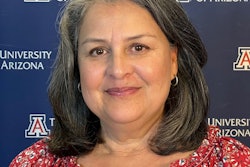Early in his administration, President Obama laid out an ambitious plan for the United States to have the highest proportion of college graduates by 2020. But a recent study suggests that Hispanics, the nation’s fastest-growing ethnic group, may be falling behind academically in the nation’s most populous state.
“Latino College Completion: California” was released by Excelencia in Education, a Washington, D.C.-based advocacy group, as part of its Roadmap for Ensuring America’s Future initiative. The Roadmap is a collaborative partnership among 60 members of the Increasing Latino College Completion initiative.
The report found that though the percentage of Hispanics with undergraduate degrees grew by 13 percent between 2006 and 2008, Hispanics still lag behind Whites in college completion rates.
From 2007 to 2008, the report finds, Hispanics in California had a graduation rate of 34.6 percent, compared to 47.4 percent of Whites.
Using another metric, the report found that among Hispanics, the completion rate per 100 full-time students was 13.7 percent, below the 14.5 percent needed relative to the adult population with no college degree.
The report suggests that increasing college completion among Hispanics is key to meeting the nation’s long-term educational goals, says Deborah Santiago, co-founder of Excelencia in Education.
“We see this as an opportunity because in our broader initiative, we say that the nation can’t meet our college goals without Latinos,” she says.
Hispanics have accounted for more than half of the United States’ growth in the past decade, growing at a rate of 43 percent — four times that of the population as a whole, according to the United States Census. And in California, where Hispanics are 38 percent of the population, they are expected to become the state’s largest ethnic group by 2020.
Santiago says that some of the report’s findings can be attributed to the relative youthfulness of the state’s Hispanic population. Nearly half of students in California’s K-12 system are Hispanic.
“We’re in the pipeline,” she says. “We just haven’t gotten to the college level yet.”
Yet many Hispanic students are simply being “priced out,” she says, unable to meet the financial demands of a college education, either because of lack of education or resources.
“Research shows pretty clearly that Latinos have less college knowledge,” she says. “Forty percent of Latinos go to college as the first in their family. This tells us that you can’t assume that the kitchen table conversation is there.”
The Excelencia report was unveiled on Tuesday at a gathering of local officials at the Westin San Francisco Market Street hotel in San Francisco, Calif. The organization also has released similar reports on Florida, Pennsylvania and Texas.
Among the speakers was Frank Alvarez, president of the Hispanic Scholarship Fund, or HSF.
HSF unveiled an expansion of its “Generation 1st Degree” initiative, funded in part by Jacki and Gilbert Cisneros, multi-state lottery winners and former residents of Pico Rivera, Calif.
“The Cisneros gift is just the beginning of the movement within the community of Pico Rivera and its population,” says Alvarez. “They lived there until they won the lottery, and so they felt that they wanted to give something back to their city.”
Though much of the initiative’s funding goes toward scholarships, much of the money will be used to fund educational programs about the importance of college for parents.
Alvarez says that the “Generation 1st Degree” program — which focuses on low-income high-achieving students — starts with the goal of ensuring that each of the nation’s 13 million Hispanic households has at least one holder of a college degree.
“Once the degree is in the household, then it demystifies the whole process,” he says.















